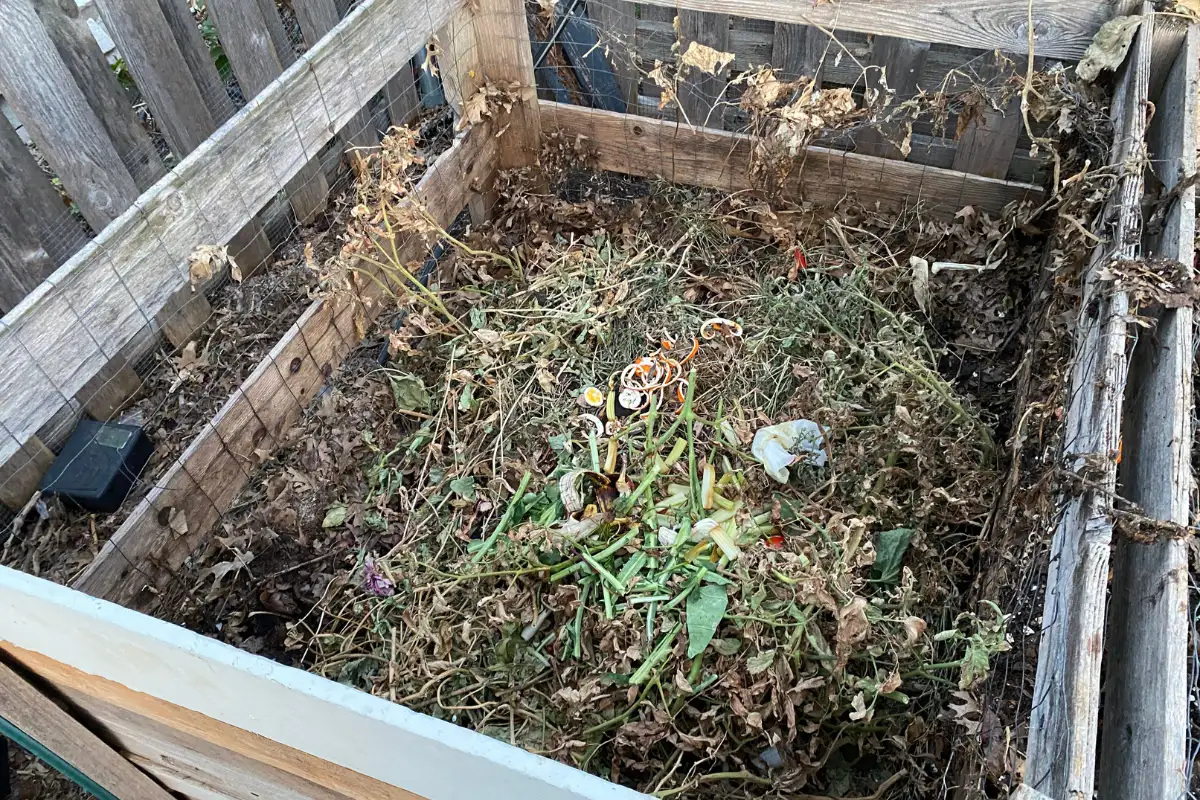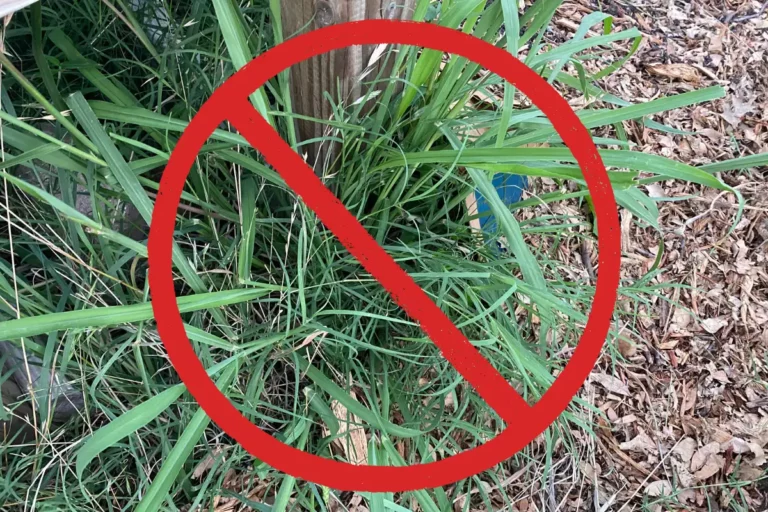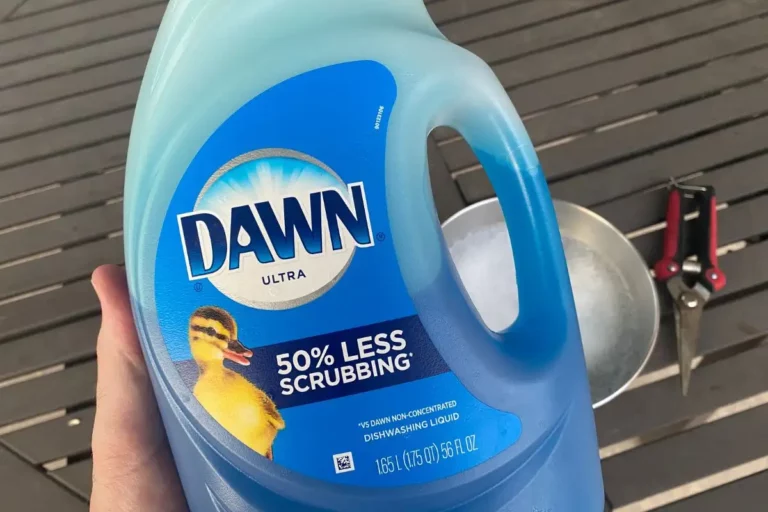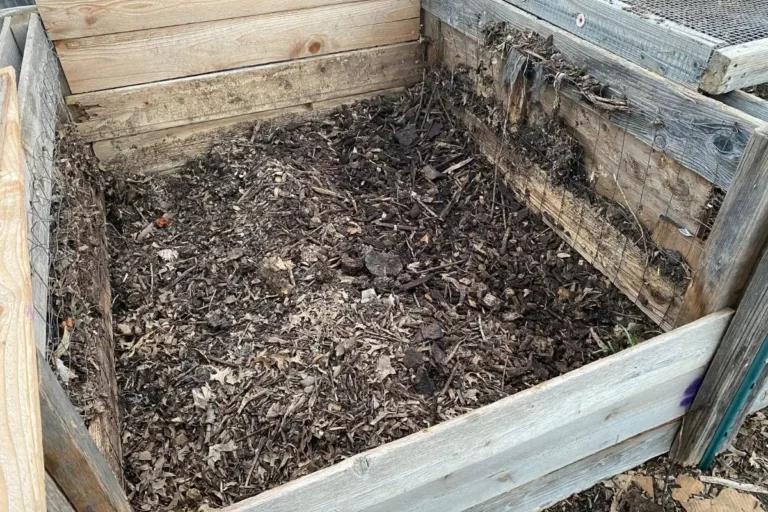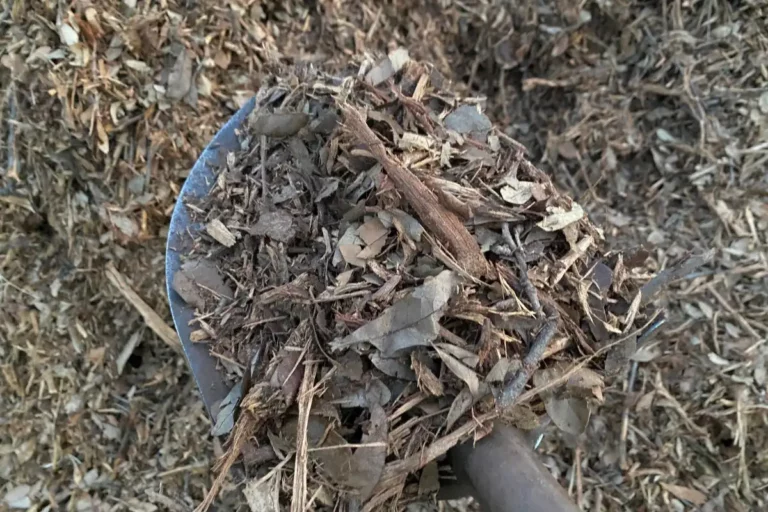Bugs in Your Compost? Here’s How to Get Rid of Bad Ones
Unwanted bugs like aphids, fire ants, spider mites, squash bugs, and whiteflies can make a home in compost, overwintering during the cold months and proliferating come spring. Soapy water and diatomaceous earth can be used sparingly to stop these bugs and keep them from spreading.
Over the years, I’ve seen lots of bugs in my compost. From the countless helpful decomposers to the occasional sight of unwelcome pests, my compost pile has been a hub of insect activity.
Most of these bugs are great to have around, so knowing how to identify good versus bad bugs can play an important role in keeping your compost pile as productive as possible.
As researchers at the University of Missouri have noted, all kinds of organisms are responsible for breaking down the material in your compost—from bacteria, fungi, and protozoans to nematodes, pill, bugs, earthworms, and many other beneficial insects.1
When it comes to composting, you shouldn’t just toss everything from your garden into your compost pile. If you do, you might end up with bad bugs in your compost.
But if that happens, don’t worry. The fixes are relatively easy to handle, as I’ll explain below by covering these topics:
- The good bugs you’ll find in your compost and what they do for the composting process.
- The bad bugs you might find in compost and why they might have shown up there.
- Several ways to get rid of bad bugs if you’ve found them in and around your compost.
Understanding what bad bugs are looking for and how to keep them out of your compost is key to creating nutrient-rich, bad-bug-free compost that’ll help your garden whenever you spread it around.
So let’s take a closer look at good and bad bugs to learn why they’re in your compost and what you can do to get rid of any unwanted pests.
Disclosure: This post may contain affiliate links to some of my favorite products found on Amazon and other retail sites. I’ll earn a small commission from purchases made through those links, at no additional cost to you. Please read my product disclosure page to learn about the care I take when recommending products to my readers.
Which Bugs Are Good and Bad for Compost?
Compost piles, especially larger ones that take many months to break down, will inevitably develop their own unique ecosystems.
If you look closely, you’ll see a miniature world that bustles with life, much of which plays a crucial role in the composting process.
Most of these bugs work in tandem with the natural decomposition that’s taking place, helping to break down organic matter, but a few pesky bugs can find their way in and pose a challenge, both for your compost pile and for your garden.
This is why you need to learn how to differentiate between the good bugs and the bad ones.
Let’s start with the good bugs. These little guys will break down organic materials, so the more of them you see, the better for your compost!.
- Ants: Some ants can be problematic—fire ants, leafcutter ants, and ants that protect aphids—but generally speaking, ants can help aerate the soil, and they can be a good food source for predatory insects. If you see little black ants around your compost, let them be! They’re an important part of your garden, and there’s no reason to worry about them.
- Beetles: Some beetles can be bad for your garden—such as Colorado potato beetles, cucumber beetles, flea beetles, and Mexican bean beetles—but many others are beneficial for your garden, such as ground beetles and rove beetles. These bugs feed on smaller pests, and their larvae can also aid in the decomposition process.
- Earthworms: My favorite little garden helpers, earthworms aerate the soil and speed up the decomposition process exponentially. If you see them in or around your compost pile, that means you’ve got good things going on underneath the surface. As you turn your compost, you’ll see lots of finished compost beneath the upper layers due to the help of these little decomposers.
- Pill Bugs: I’ve always called them roly-pollies, but pill bugs are great to find in your compost since they feed on decaying plant matter, helping to break it down. They’re mostly harmless to plants—except for the smallest little seedlings—so don’t worry about them if you see them in your compost. Let them do their work, and your compost will decompose even faster!
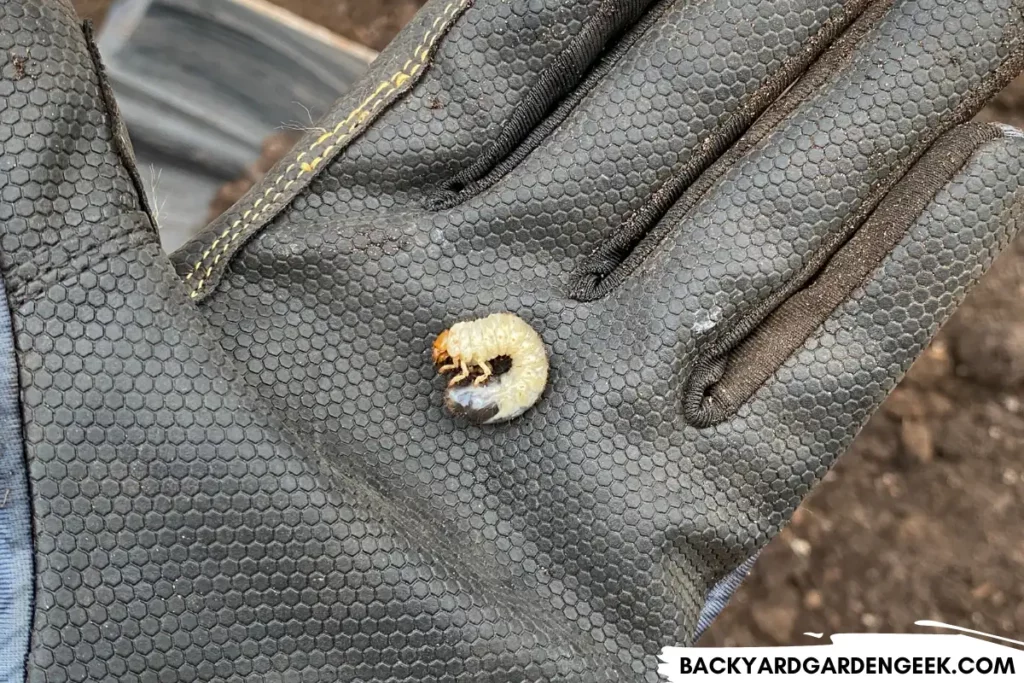
These 4 commonly found bugs can be fun to find in compost, but there are quite a few bugs that I don’t want to see near my compost.
I’m not really worried about them harming my compost since compost will decompose naturally if it’s exposed to the elements. What worries me is the possibility that these bugs are proliferating or overwintering in my compost, which means they could spread to other parts of my garden given enough time.
Here are the bugs I don’t like to see in my compost bin:
- Aphids: These tiny insects suck the sap from plants, and they can lay eggs that’ll overwinter in your compost and cause aphids to reappear in the spring. If you see them climbing around decomposing plants in your compost, you’ll want to stop their spread as quickly as possible.
- Fire Ants: Unlike their beneficial counterparts, fire ants are really annoying since they can bite you when you’re working with your compost. They can even crawl under your gloves and into your clothing, which I can tell you from personal experience is not fun at all!
- Slugs and Snails: These pests feed on live plants, so they typically won’t hang out around finished compost. But if you’re moving partially decomposed materials around your garden, you might accidentally help them move from the compost bin to your garden beds.
- Spider Mites: I can’t stand spider mites. They’ll show up unexpectedly and suck the life out of your plants, causing yellowing and foliage decay. They reproduce quickly and can become a significant problem if introduced to your garden if you don’t do anything to stop them.
- Squash Bugs: These bugs are terrible. They’ll spread plant diseases, proliferate quickly, and withstand some natural organic treatment methods. They won’t hang around long in compost that’s decomposing, but you don’t want them in there at all since they lay lots of eggs. If you see them, act quickly!
- Whiteflies: Similar to aphids, whiteflies suck plant juices and cause yellowing. They’re easy to kill, but they’re great at hiding, and they reproduce quickly. If you notice whiteflies, don’t let them get out of control.
So what do you do if you see these bugs in your compost?
The good news is that there are several approaches you can take to rid your compost of these bad bugs while leaving working to leave your good bugs unharmed.
That being said, let’s look at the most effective ways to rid your compost of bad bugs, ensuring your finished compost is bug-free and harmless to spread all around your garden.
Best Ways to Get Rid of Bad Bugs in Your Compost
As I noted above, most bugs found in compost are relatively beneficial, but if you want to keep bad bugs out of your compost, here are a few things to consider and some next steps you can take to avoid compost-related infestations.
1. Don’t Compost Infested Materials
This is my #1 rule. If you think something might be infested—or even if you’re a bit unsure whether something’s infested or not—do not put it in your compost pile.
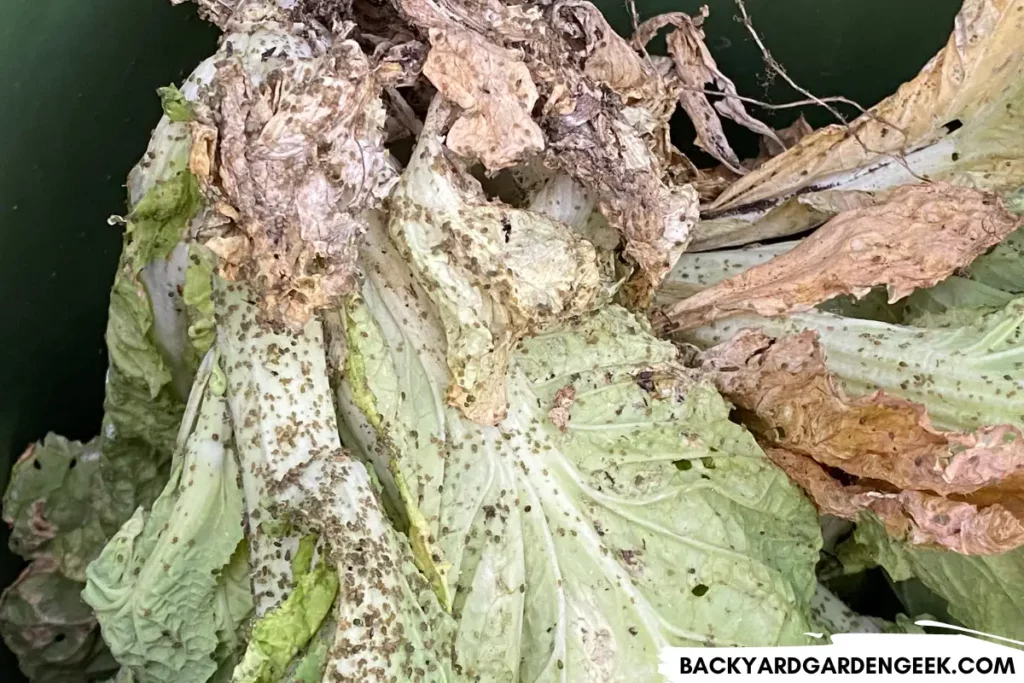
In particular, I recommend doing so when it comes to plant scraps from your garden, especially toward the end of the growing season.
You have no idea what bugs might be hiding in and around your plants. If you’re pruning your plants and simply dumping all of those scraps in the compost, you might encourage the spread of bad bugs.
If the plant scraps look off in any way, I trash them. I’d rather not risk spreading bugs to my compost!
2. Aerate Your Compost Regularly
Aeration is a critical step in managing your compost, especially for unearthing and deterring bad bugs that may be hiding within.
Regularly turning your compost not only introduces oxygen that is essential for the composting process but also disrupts the environment that many pests find desirable.
As the weather transitions into the colder months, many bugs seek refuge in the warm, decomposing layers of your compost pile. By aerating your compost, you disrupt these pests’ safe havens, exposing them to predators and less hospitable conditions.
Similarly, as the weather warms up in spring, aeration helps to prevent the accumulation of moisture-rich pockets where bugs thrive.
This simple, yet effective practice ensures your compost remains healthy and less appealing to unwanted pests. Implementing a routine schedule for turning your compost can significantly reduce the presence of bad bugs while also speeding up the composting process.
3. Cover Food Scraps
One of the most effective strategies I use to keep bad bugs at bay is to cover my food scraps when I add them to my compost pile.
Decomposing food is attractive to a variety of pests. To combat this problem, you can use carbon-rich materials—such as dead, dried grass, leaves, sticks, and twigs—to obscure and protect these scraps. These materials not only mask the scent of decomposing food, but they also add necessary balance to what might otherwise be a nitrogen-heavy compost pile.
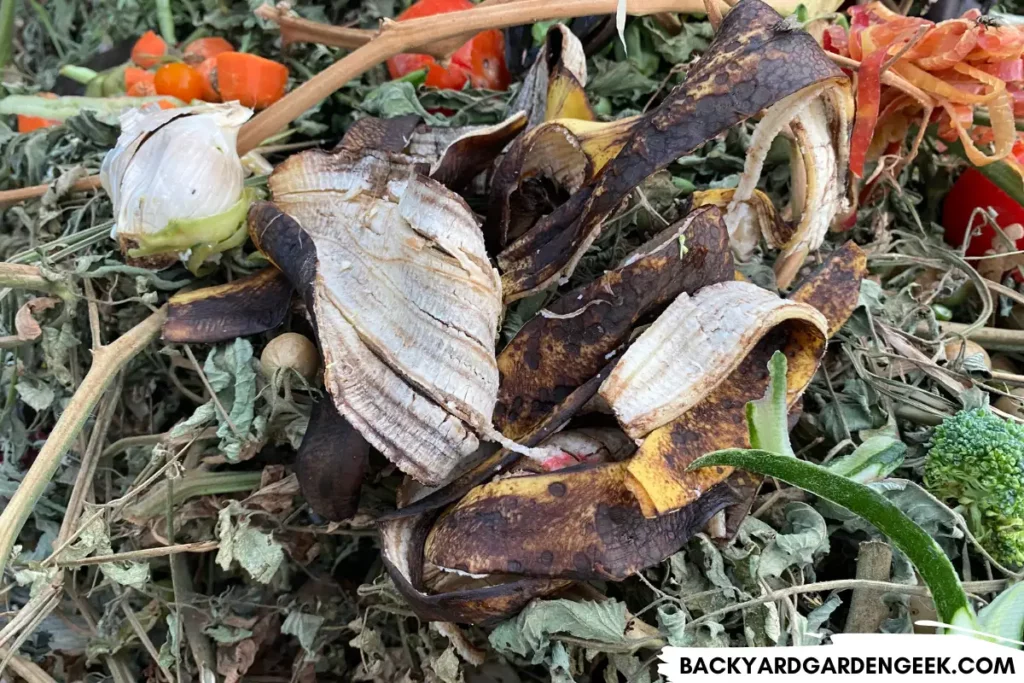
By adding a layer of carbon-rich materials over your food scraps, you create a physical barrier that deters pests from accessing this food source. This method is particularly useful in preventing flies from laying eggs, thus reducing the population of maggots and other larvae that can thrive in unsecured compost.
On top of that, this helps maintain moisture levels in your compost, preventing it from drying out too quickly.
4. Spray Your Compost with Soapy Water
If you’ve noticed unwanted pests in your compost, you can kill them off with a simple, homemade soapy water spray.
Mix 5 tablespoons of castile liquid soap per 1 gallon of water in a garden sprayer. By applying this mixture to your compost pile, you can kill off some of the smaller bad bugs (aphids, spider mites, and whiteflies) since the soapy water effectively suffocates them.
Just be a little careful with your application since soapy water doesn’t discriminate and can also harm beneficial bugs that might be in or around your compost.
When preparing your soapy water mixture, I opt for a natural, biodegradable soap to minimize any negative impact on your compost’s ecosystem. My favorite is Dr. Bronner’s Peppermint Castile Liquid Soap.
A light spray on the affected areas, rather than dousing the entire pile, can help target pests while avoiding good bugs.
5. Sprinkle Compost with Diatomaceous Earth
Diatomaceous Earth (DE) is a potent, natural pest control powder made from the fossilized remains of diatoms, microscopic aquatic organisms.
Its microscopic sharp edges can pierce the exoskeletons of various bugs and cause dehydration and death. This makes DE an excellent choice for targeting and eliminating bad bugs in your compost without the use of harsh chemicals.
However, you’ll want to be careful. DE doesn’t differentiate between beneficial and harmful insects, and you can inadvertently harm beneficial if you go overboard on your DE applications.

To minimize harm to good bugs, DE should be applied sporadically and selectively. Use a high-quality bulb duster and target areas where bad bugs are most problematic while sparing the rest of your compost pile as much as possible.
I suggest wearing a protective mask during any DE application to prevent inhalation of the fine powder, especially on windy days. You might even want to toss on some eye goggles if it’s windy outside since DE particles will blow into the air the moment you begin applying them to your compost pile.
To get your DE at the best price, I recommend buying the biggest bag of Harris Diatomaceous Earth that you can find. Usually, the bigger the bag, the more money you’ll save when you look at the cost per ounce.
6. Solarize Your Compost
Let me be crystal clear: Solarization is an emergency-only response to bugs in your compost. You shouldn’t solarize your compost unless you’ve got bugs galore and your soapy water or diatomaceous earth isn’t doing the trick.
Here’s the thing about solarization: It’s going to kill everything in your compost. Bad bugs? Yes. Good bugs? Yes. Microscopic helpers? Yes.
As the compost pile heats up, the earthworms will do what they can to flee (and other bugs will too), but your good bacterial friends aren’t going to survive a few weeks of solarization.
On the other hand, if you’ve got any soilborne diseases, solarization might just destroy those as well! But if you’ve avoided composting diseased plants, you’ve likely avoided soilborne diseases as well.
Long story short, here’s how you can solarize your compost:
- Moisten your compost pile evenly.
- Cover your pile with solarization plastic, doing your best to avoid any gaps or openings.
- Use spring clamps (if you’ve got a compost bin) or weights like stones or bricks (if you’ve got a compost pile). These will help anchor the plastic.
- Allow the sun to do its work for 4-6 weeks. As the pile heats up, the heat will kill off the bugs.
Solarization has its place, but most bugs can be killed off with soapy water sprays or diatomaceous earth, so please try those approaches first!
The good thing about compost piles is that they’re very forgiving. If you hit them with soapy water and diatomaceous earth (or even solarization), you’re not going to cause any long-term issues.
What this means is that it mostly comes down to doing what I’ve recommended above in a vigilant way.
If you’re consistent in your pest management strategy, those bad bugs will be done in no time at all!
References
1. David Trinklein, Making and Using Compost, University of Missouri Extension, July 1, 2022, https://extension.missouri.edu/publications/g6956.
